NORTH WALES COAST RAILWAY:NOTICE BOARD
Rheilffordd arfordir gogledd Cymru: Hysbysfwrdd
28 December 2020





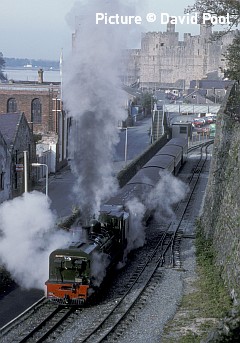
Forthcoming events
(see also our Calendar page for venues)
Note: we have removed all entries relating to meetings as the events are cancelled.
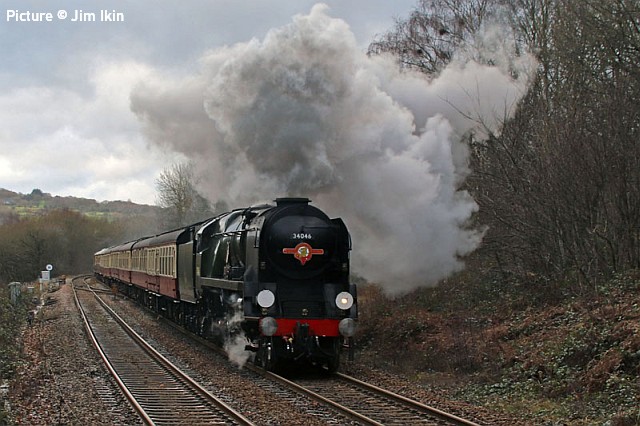
Not North Wales, but a classic steam shot: 34046 Braunton near New Mills Central, 12 December (Jim Ikin).
20 Years ago - recalled by Ken Robinson
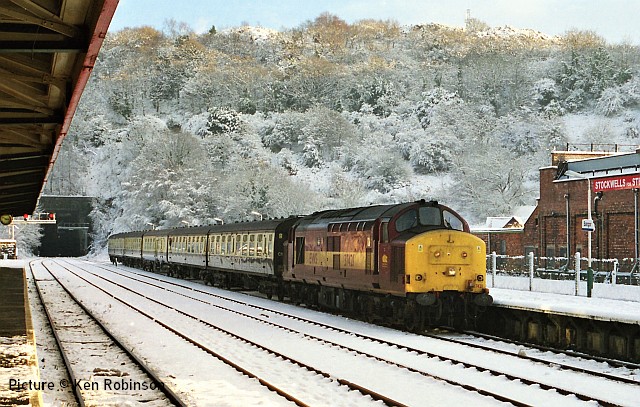
As many readers will recall, the end of the year 2000 saw the end of regular class 37 passenger haulage on the North Wales Coast line. The 'final working' was on 30 December 2000, although a few workings took place into January 2001. Following snowfall in North Wales at the end of December, I ventured to Bangor on a sunny 29 December to photograph one of the final trains - this one being the 12:07 Birmingham New Street - Holyhead, hauled by 37421 - one of seven 37/4's allocated to the work (WKCD pool) in 2000.
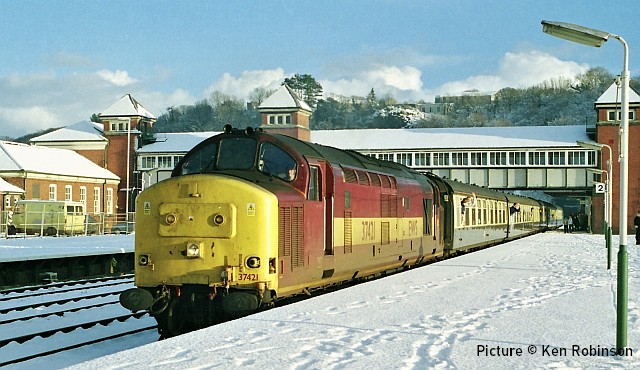
Here are two images which I took that day, which turned out to be the last photographs I took of the 37/4 workings. 37 421 was transferred to Scotland a couple of weeks afterwards, working mostly the Fort William portion of the Caledonian Sleeper. Withdrawn in 2009, it was acquired by the Pontypool and Blaenavon heritage line, where it re-gained Regional railways colours and worked a few trains before being 'head-hunted' by Colas. In recent times it returned for a few months (along with 37 418) to passenger traffic on the Rhymney line, but today is more likely to be seen on Network Rail's trains.
Events at Gobowen (and Bidston)
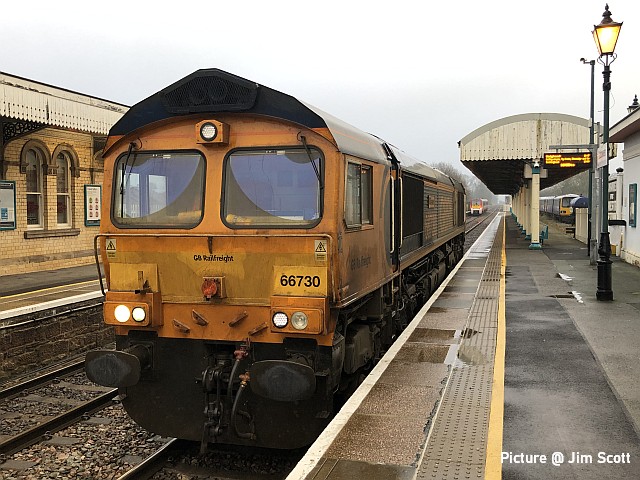
Route learning runs using a GBRf loco have been talking place between Bescot and Bidston in relation to forthcoming engineering work on the Merseyrail network. Above, waiting in Gobowen on 23 December; in the background is a 175 heading south. The class 144 Pacers earmarked for the Cambrian Heritage Railways are still in the sidings (Jim Scott).
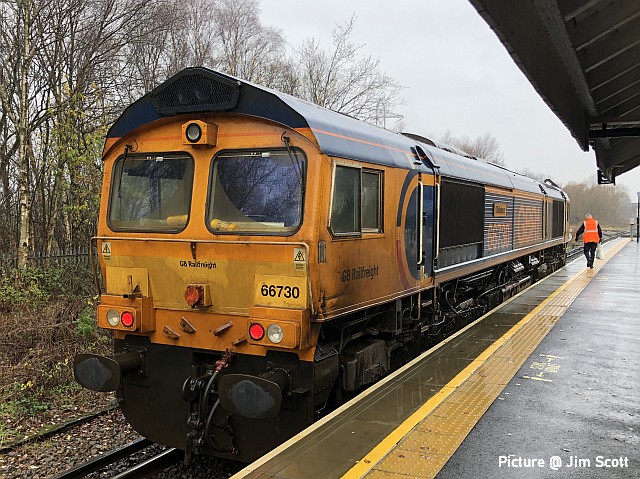
At Bidston, preparing to head back to Wrexham. The loco is 66 730 Whitemoor.
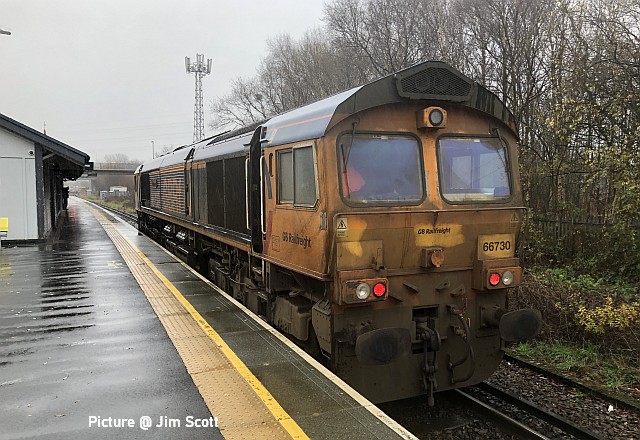
The filthy state of the loco suggests it has been in use during the autumn for the Rail Head Treatment trains, whose high pressure jets throw up mud from the track (Jim Scott.)
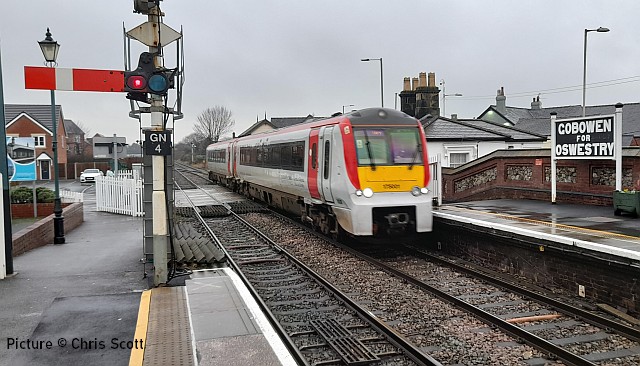
Chris Scott was at Gobowen station to see the return working. First to pass was 175 001 on the 13:00 hrs to Shrewsbury.
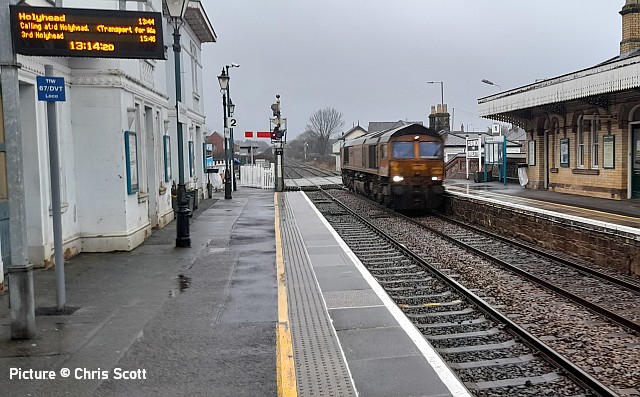
In what seemed to be a short space of time because of the speed limit having been being raised to 90mph, allowing the 175 to clear the section quicker, 66 730 appeared heading towards Shrewsbury (Chris Scott). Signs of the times: a new concrete base has been installed for a new ticket machine and as can be seen in the picture, a new sign marking the stopping point for the Class 67 and Driving Van Trailer operation which will work some Holyhead - Cardiff services..
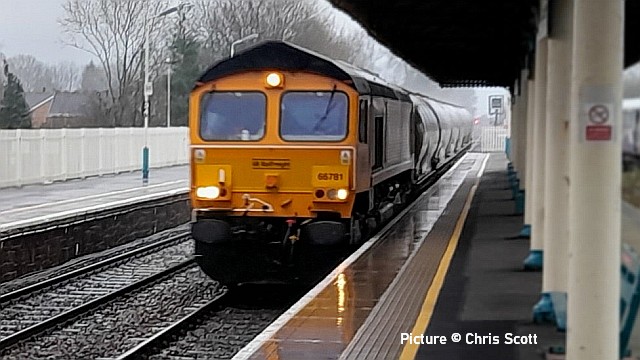
The barriers stayed down and almost immediately 66 781 appeared on the Penyffordd cement (Chris Scott). A busy half hour.
From Dave Sallery's archive
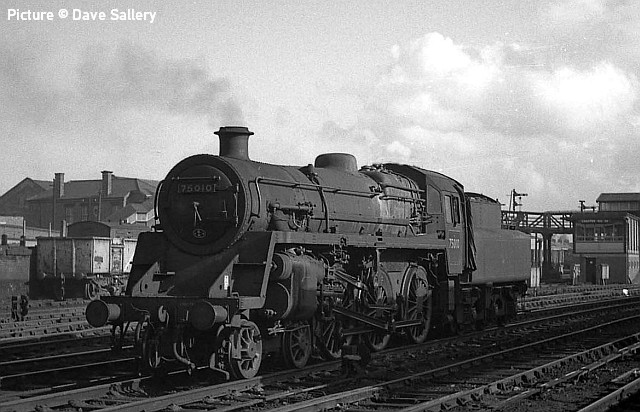
Standard 4-6-0 75010 near Chester station in December 1965. This was a North Wales loco for most of its life, being delivered new to Llandudno Junction in 1953, and later working from Bangor. Chester and Croes Newydd depots. It went on to be one of the last of its type in service, being withdrawn from Carnforth shed at the end of steam in August 1968.
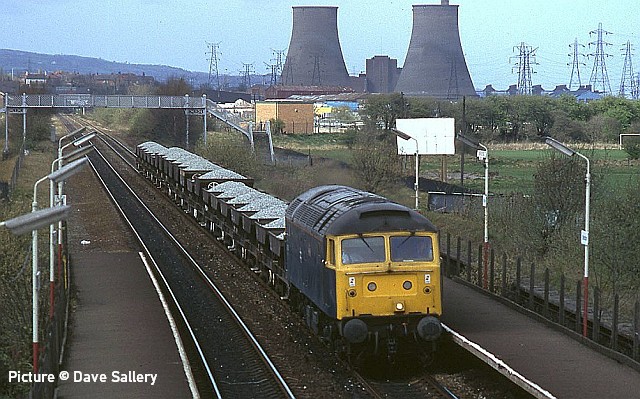
47 007 passing Shotton Low Level, 20 March 1990.
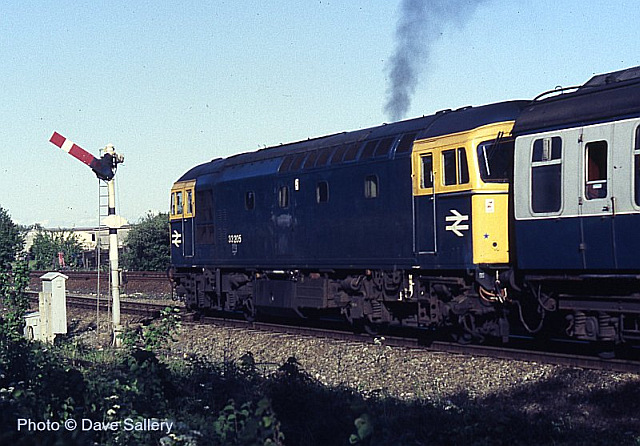
33 205 leaving Prestatyn on an up service to Crewe, 28 May 1986. This one of the batch of Class 33s built with narrower bodies to fit the structure gauge of tunnels on the London - Hastings line.
The Yo-Ho-Ho Railtour, 29 December 2006 - pictures by Tim Rogers
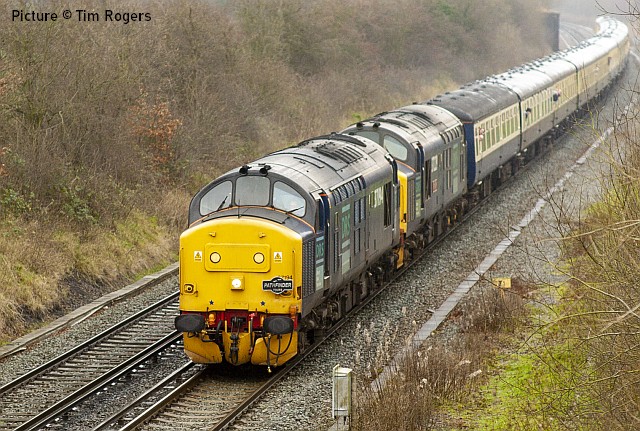
Above, 37 194 and 37 229 Jonty Jarvis arrive at Hooton on 28 December 2006 with the Pathfinder Tours 'Yo-Ho-Ho' railtour, the outward leg being train 1Z20, 05:37 Swindon to Preston via Bristol Parkway, Cheltenham Spa, Bescot Up Yard with 66 210, then the two DRS 37s to Hooton via Wolverhampton, Wrexham General, Chester to Hooton Long Siding where the train reversed.
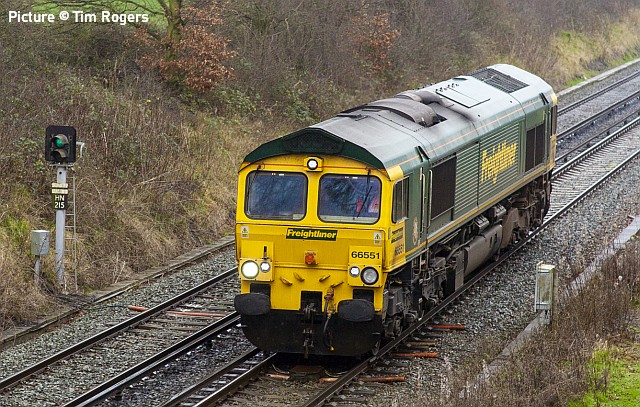
Freightliner loco 66 551 arrived to take the train onward to the Kirkby branch.
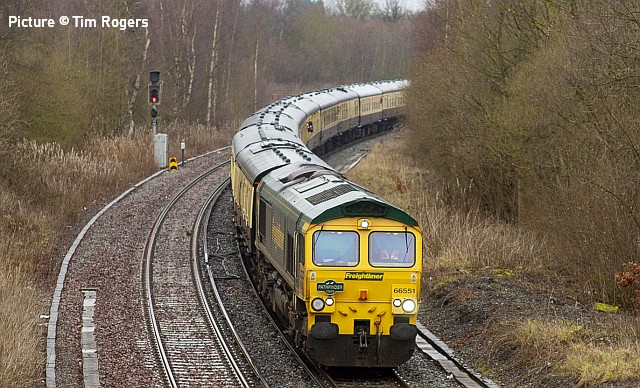
Departure.
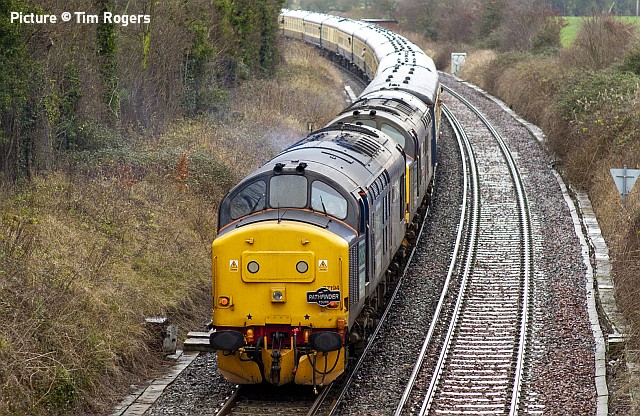
The two 37s remained coupled at the other end, to pilot the train on return from Kirby and on to Preston. Returning from Preston, the tourists were treated to haulage by 60 030, 86 614 and 66 120.

While at Hooton, Tim captured some of the Merseyrail electric units, which as 2021 dawns are due for replacement. Here's 507 005, built by British Rail Engineering York works in 1978.
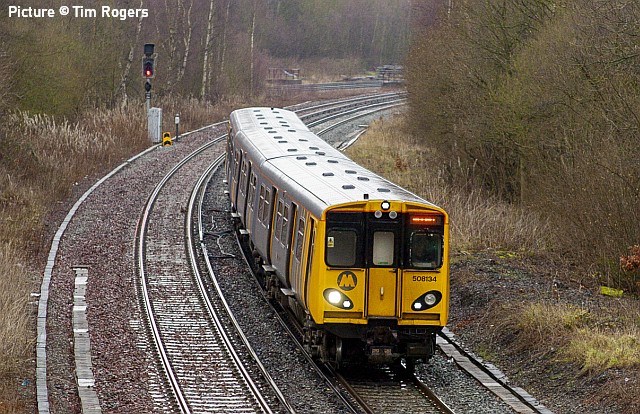
This is 508 134. The 508s are more or less identical to the 507s, but were built as 4-car sets for use on Southern Region services. Being very different from the existing Southern trains, they were not popular with staff and were eventually transferred to Merseyrail, with one coach removed. The extracted trailer cars were then converted to work in some of the Class 455 sets which replaced the 508s on the the Southern.
The 507 and 508 units are among the oldest trains still in National Rail traffic, although after a couple of refurbishments they still seem modern. The replacement Stadler-built units have improvements such as air conditioning, and level boarding at stations; it will be interesting to see how they perform, especially in the harsh conditions of the sharp curves and damp atmosphere of the Liverpool Loop tunnel.
Looking back: Welsh Highland in the 90s - with David Pool
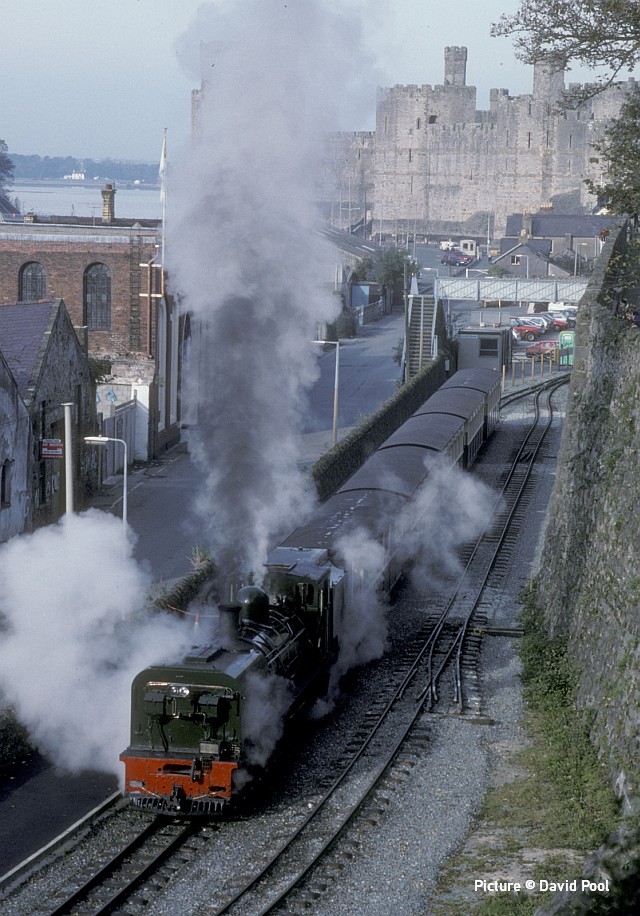
The new Welsh Highland Railway is open for business! On 26 October 1997, a few weeks after the official opening, Beyer Peacock Garratt No.138 is leaving Caernarfon, bound for Dinas. Of course this was originally the route of the standard gauge line between Caernarfon and Afon Wen, which had been closed in 1964. The facilities at the WHR station were somewhat basic, and a far cry from the impressive WHR station we see today.
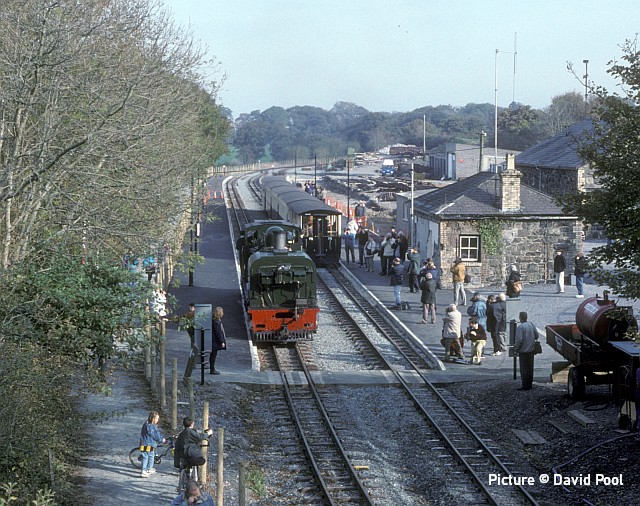
Later at Dinas, No.138 is running round its train. On this occasion the train has taken the left hand platform when arriving, which is contrary to the normal practice on the Ffestiniog Railway, but the platforms on the WHR are generally bidirectional. On the left of the image is the Lon Eifion, the cycling and walking trail which follows the trackbed of the line from Caernarfon to Bryncir.
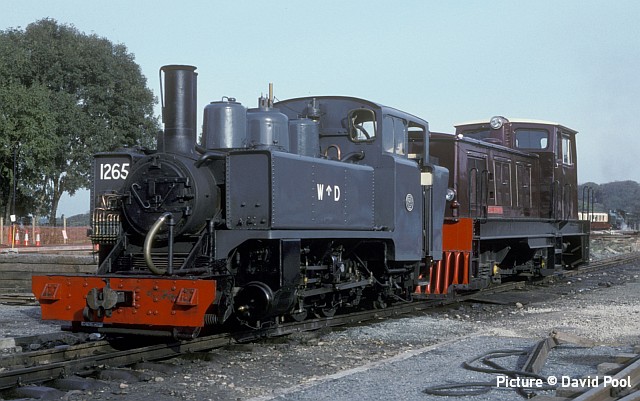
On display at Dinas, the Ffestiniog Railway’s “Mountaineer” was now in a War Department grey, and numbered 1265. The Funkey diesel, built in 1967, had previously worked at Port Elizabeth, in South Africa, and was now named Castell Caernarfon.
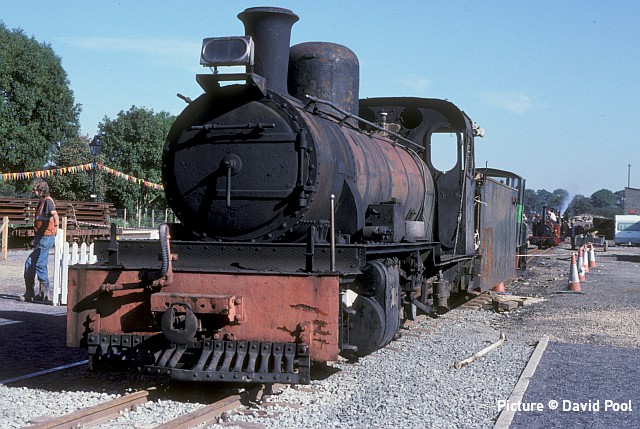
When visiting Dinas the following year on 20 September 1998, I was pleased to see another import from South Africa, this time a “Kalahari” NG 15, No.134. The size of the tender is notable, and I can understand why railway photographers in South Africa seldom showed details of the tender wheels or axleboxes. these being normally in deep shade under the body. The restoration of No.134 has taken many years, since the WHR has rightly given priority to the Garratts, but I hope it will not be too much longer before I see No.134 in steam.
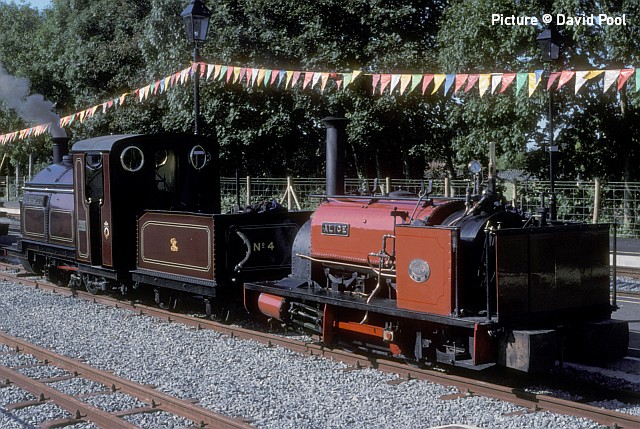
Also shown at Dinas were two visiting locomotives, Palmerston from the Ffestiniog Railway and Alice, a Hunslet built in 1902 for the Dinorwic Quarry system. “Alice” was little more than an assortment of parts when purchased for restoration in 1987 at the Bala Lake Railway Many individuals and other railways were involved in this enterprise, which led to Alice being in steam and moving in 1994. She ran on the Leighton Buzzard Light Railway by agreement until 2003, when she returned to the Bala Lake Railway, where she is today.
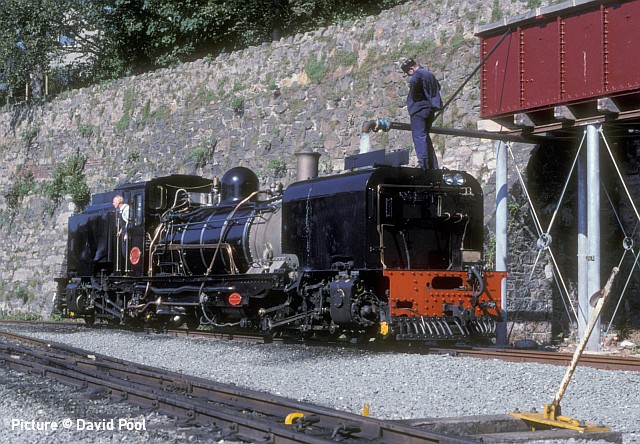
A tribute to the Beyer Peacock Works, Garratt No.143 looks superb in black livery, taking water at Caernarfon. Over the years since 1998 the Garratts on the WHR have been in various red, deep blue, pale grey and green liveries, but a clean black locomotive is authentic and certainly my preference.
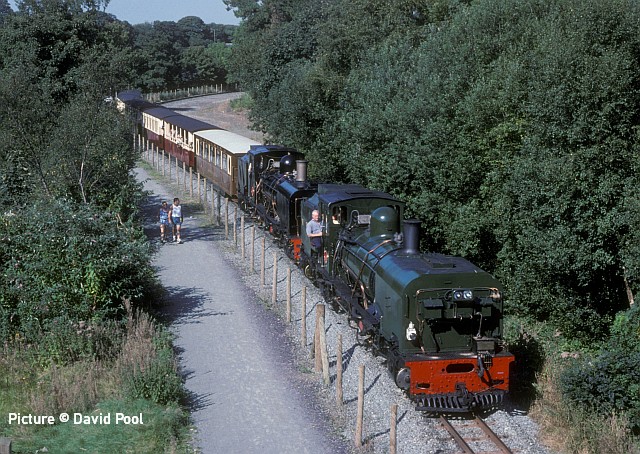
Another attraction on 20 September 1998 was the pairing of Garratts on the service trains. Nos. 138 and 143 are alongside the Lon Eifion trail, approaching the foot crossing near Pont Seiont. I was a little disappointed that neither locomotive was showing much exhaust steam, but with two Garratts easing off for the crossing this might have been expected.
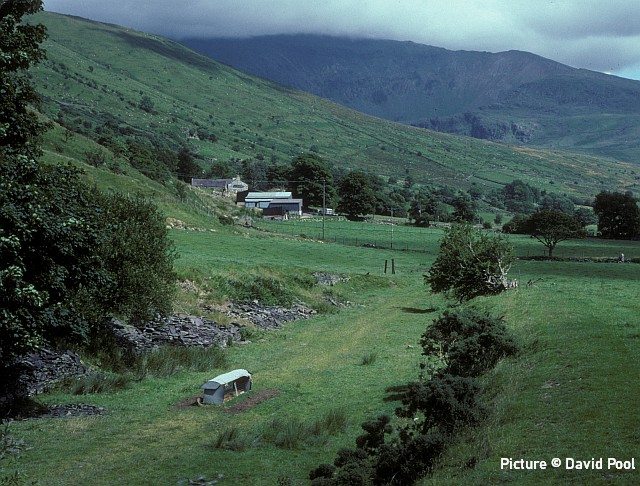
A few weeks earlier, on 29 June 1999, the Secretary of State John Prescott had published his determination that the Welsh Highland Railway could be rebuilt through the Aberglaslyn Pass to Porthmadog. The future of the WHR was now no longer in doubt, and agreements had been reached with the other parties involved.
The picture shows Castell Cidwm, taken from the A4085 road bridge over the Welsh Highland Railway trackbed. The view shows the trackbed looking south east towards Rhyd Ddu. The farm shown slightly left in the middle distance is Caeau Gwynion.
Festive Greetings from the Llangollen Railway - by George Jones
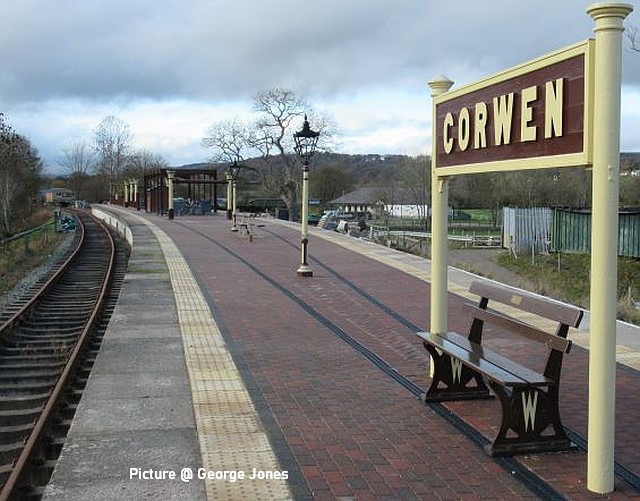
As we end this most peculiar year, I send greetings to all my contacts in the press and media with thanks for your support in reporting progress with the Corwen Project and other events at Llangollen Railway during these challenging times.
Whilst there is now a further unfortunate turn of circumstances as we end 2020, the hope is things will improve next year and we will see the new station at Corwen open on a target date of 28 May. The support obtained from donations to allow the renewal of timbers for Dee Bridge has come from near and far thanks to the publicity given to the appeal and the response to it.
The success of the fund raising also allows for the renewal of sleepers in Berwyn tunnel. If Covid-19 restrictions permit, this engineering work will allow the passage of ballast trains to Corwen and the tamping of the station loop in time for an official inspection of the new station prior to opening.
All of which will provide further exciting news reporting to conclude the challenge of the past ten years to extend the railway westwards from Carrog.
Best wishes to everyone,
George Jones, LRT Corwen Station Railway Development
North Wales Coast home page | Archive | Previous Notice Board